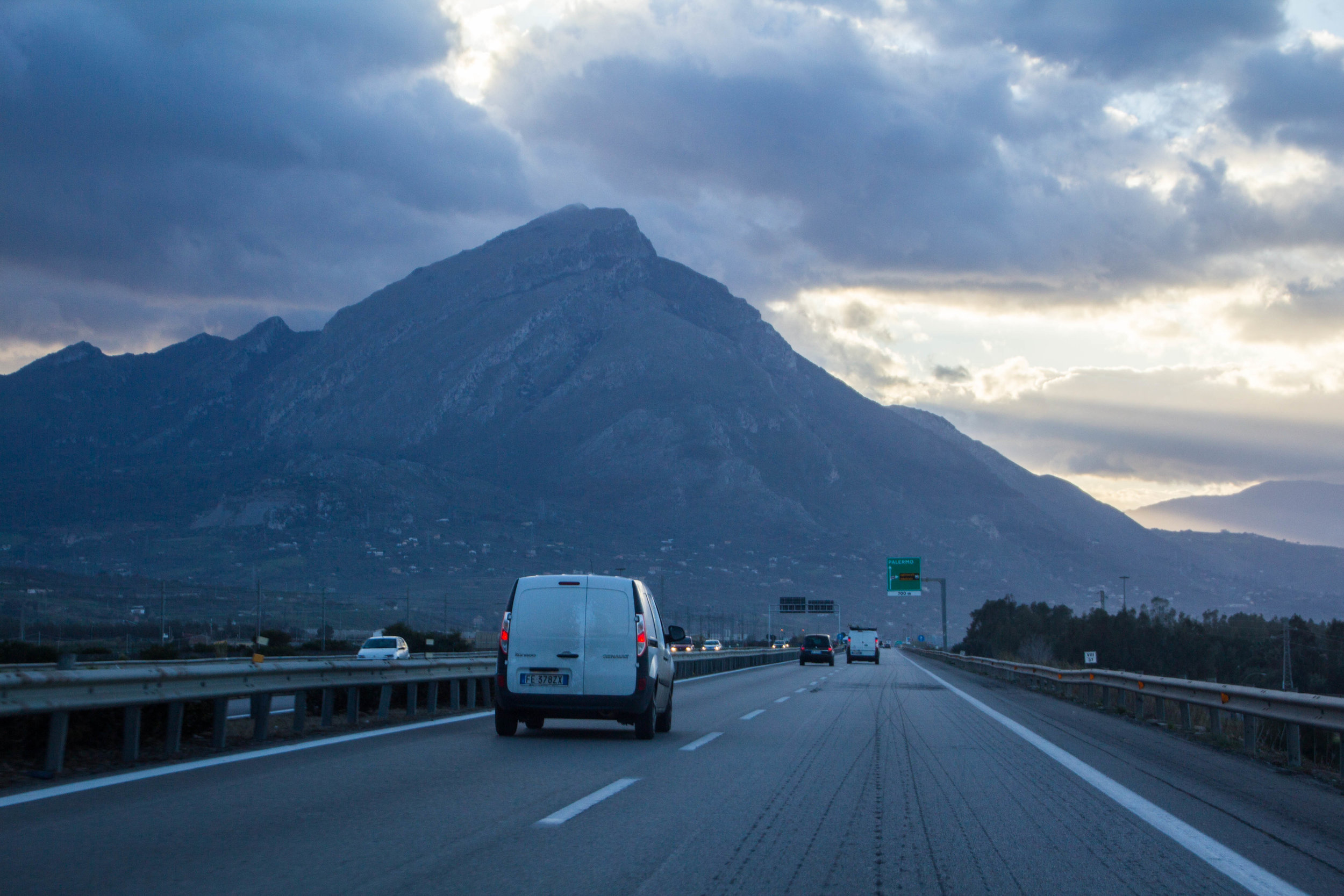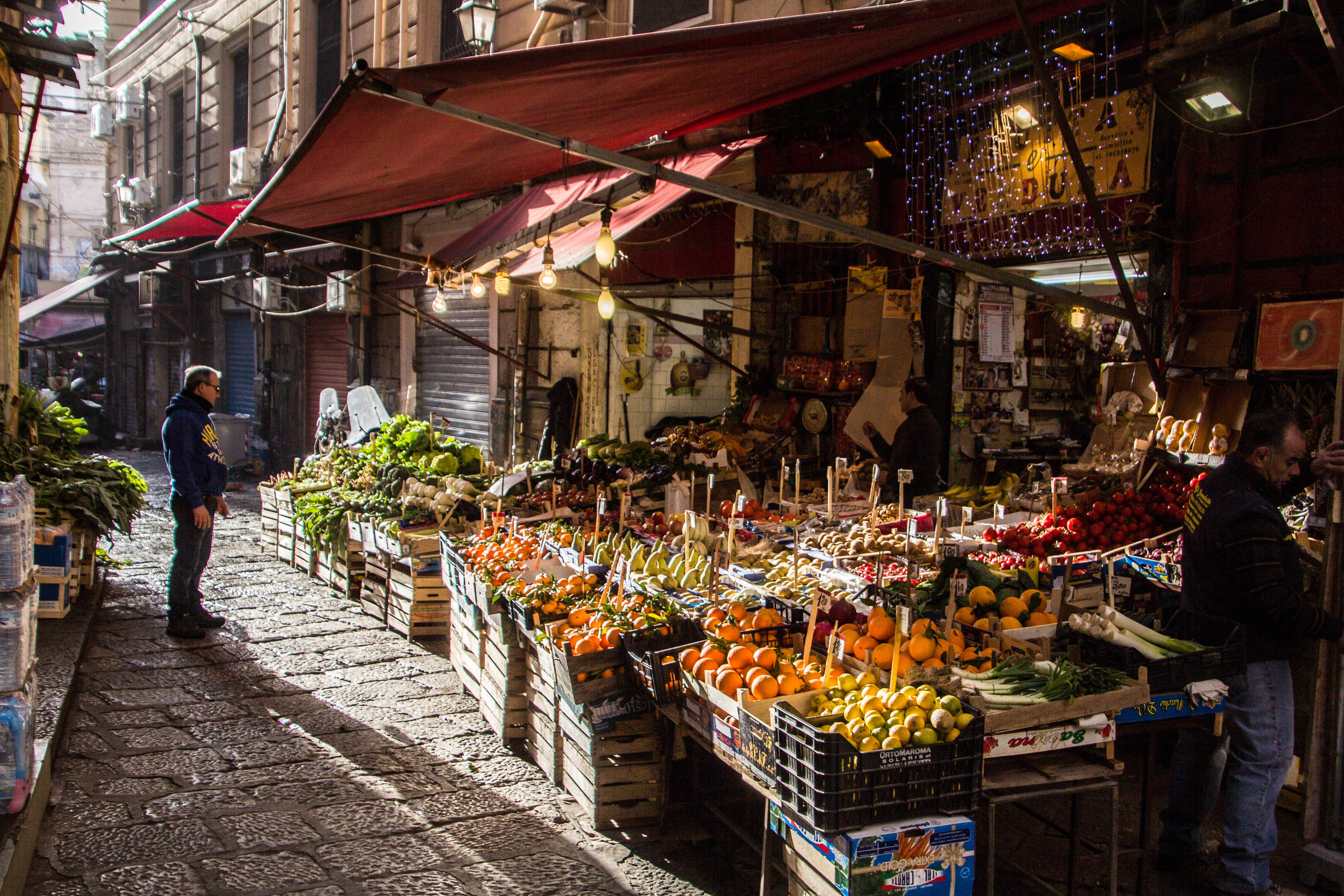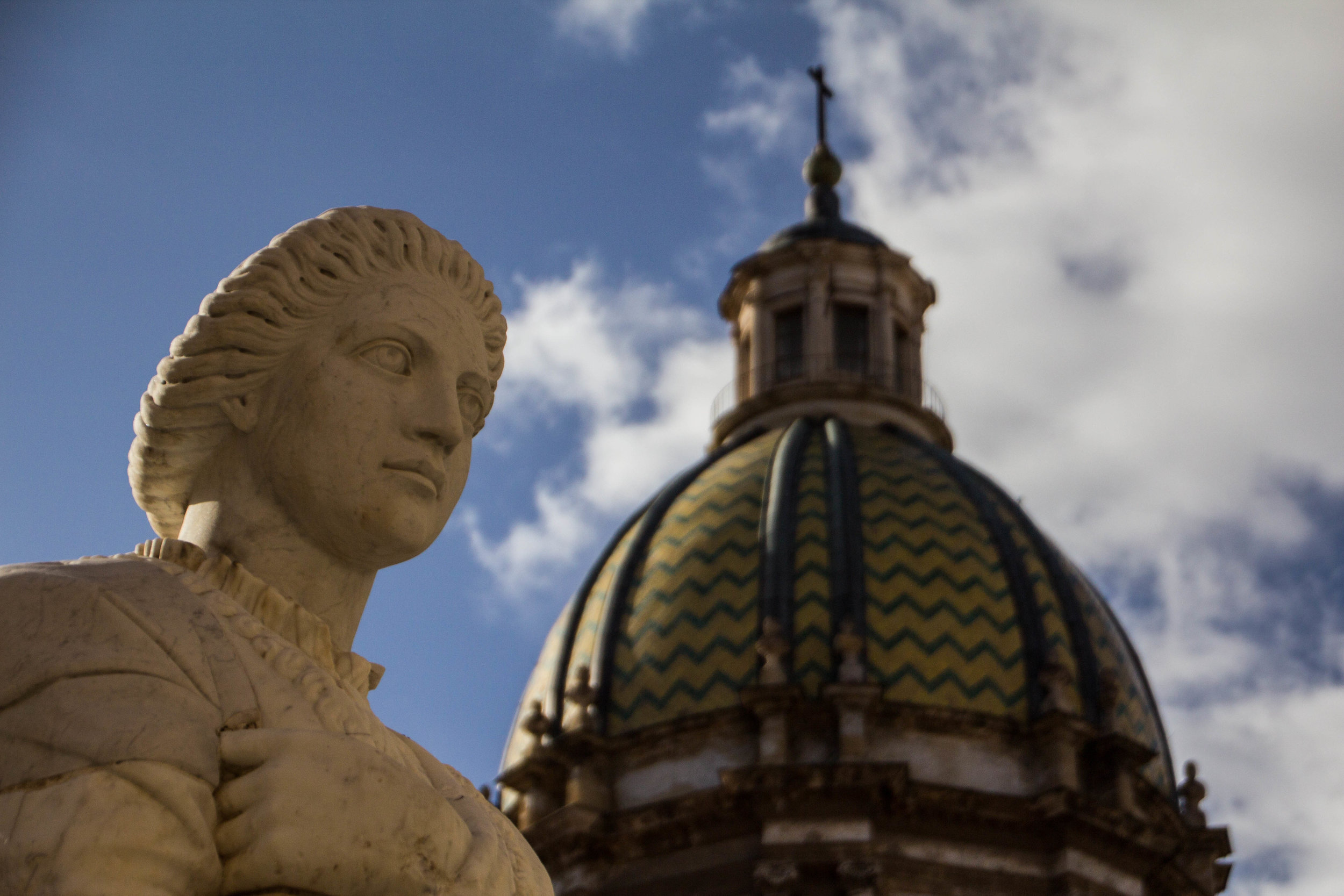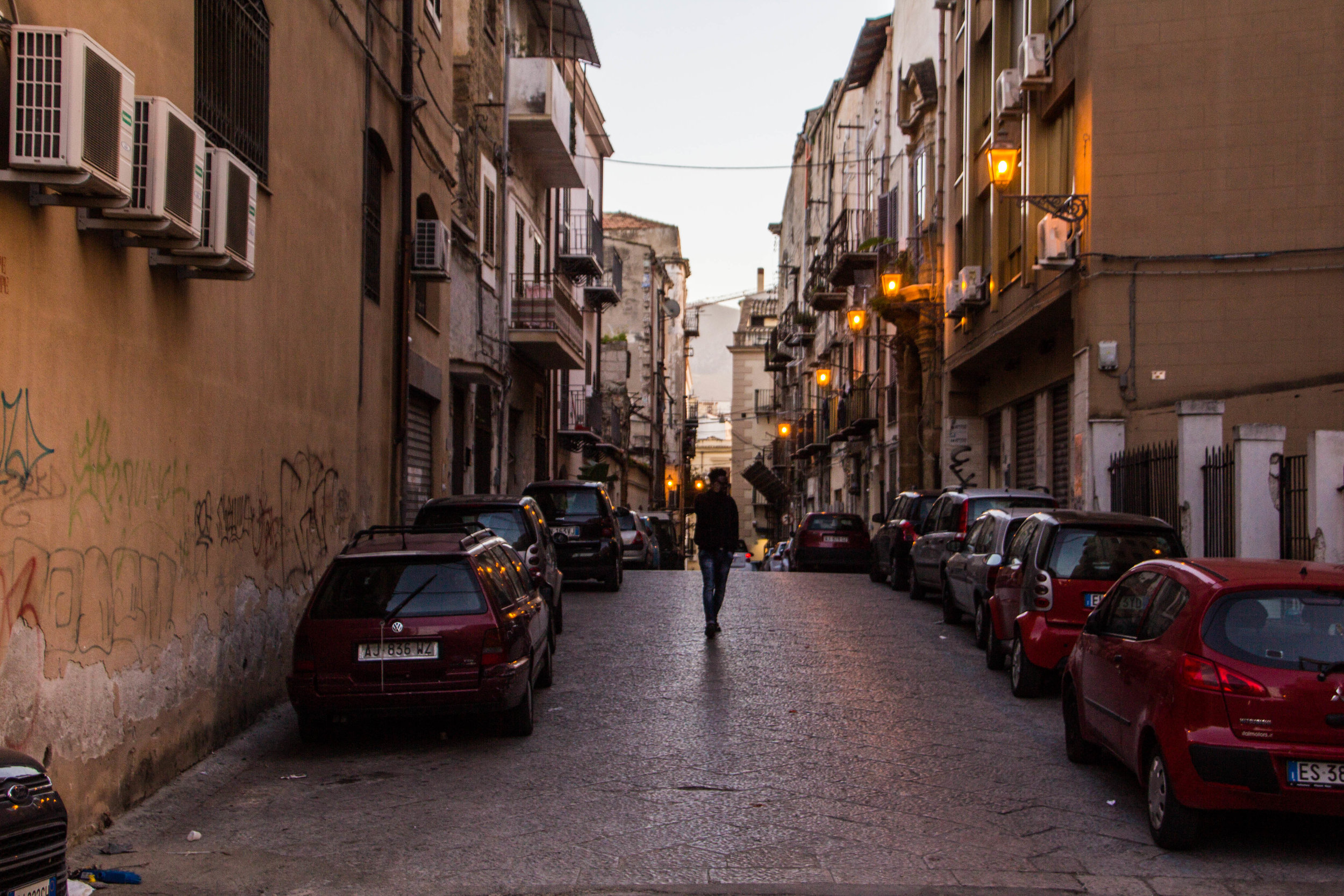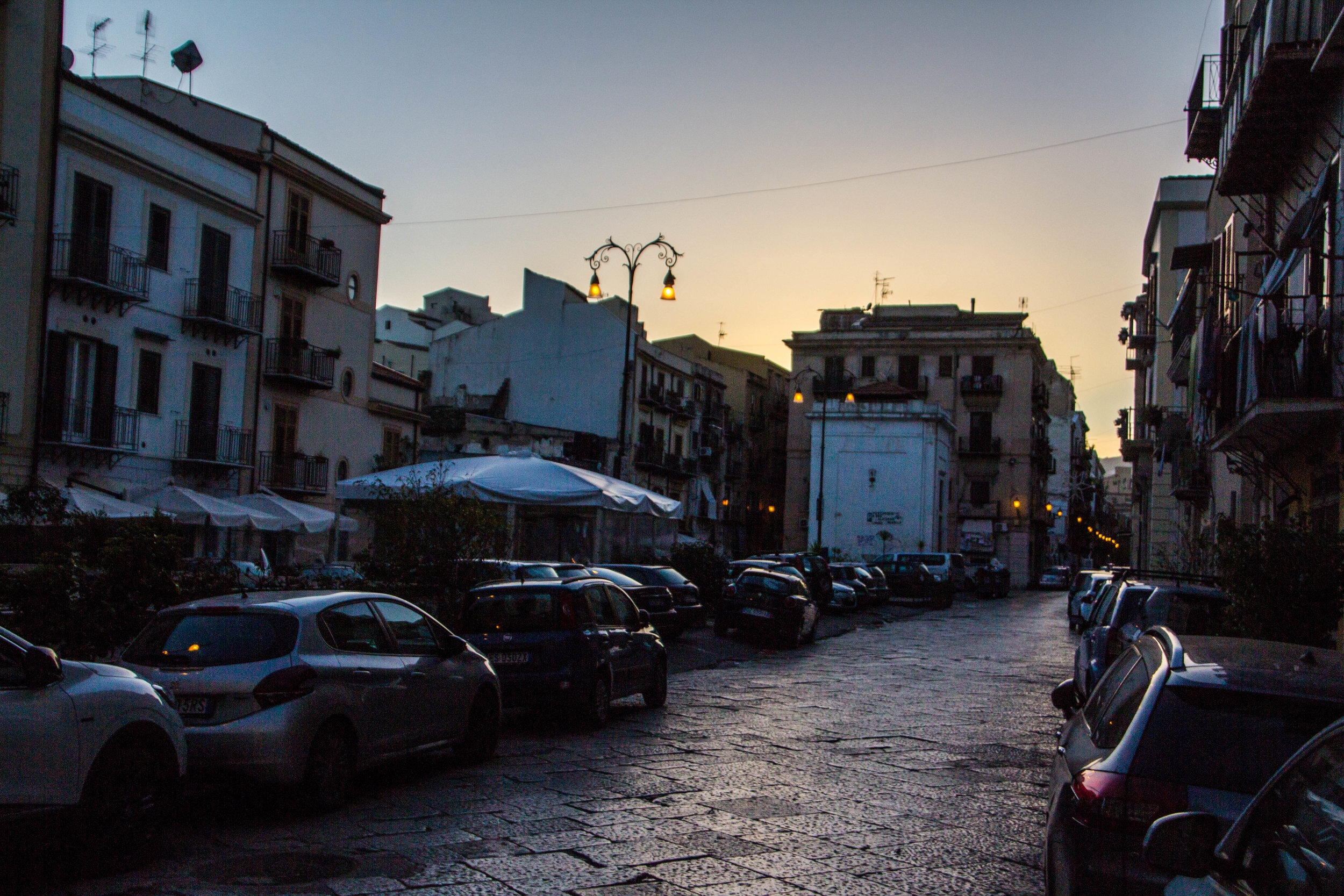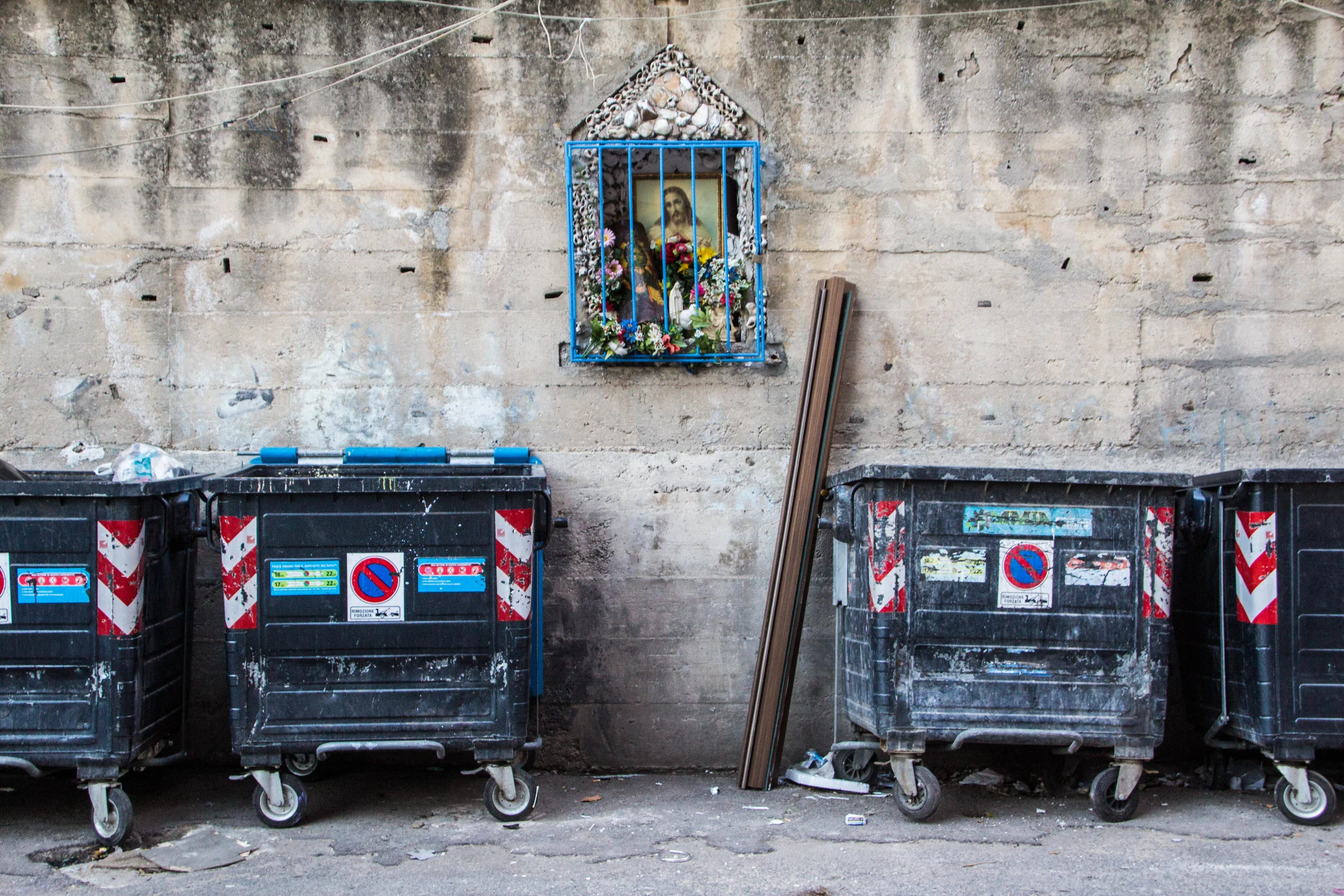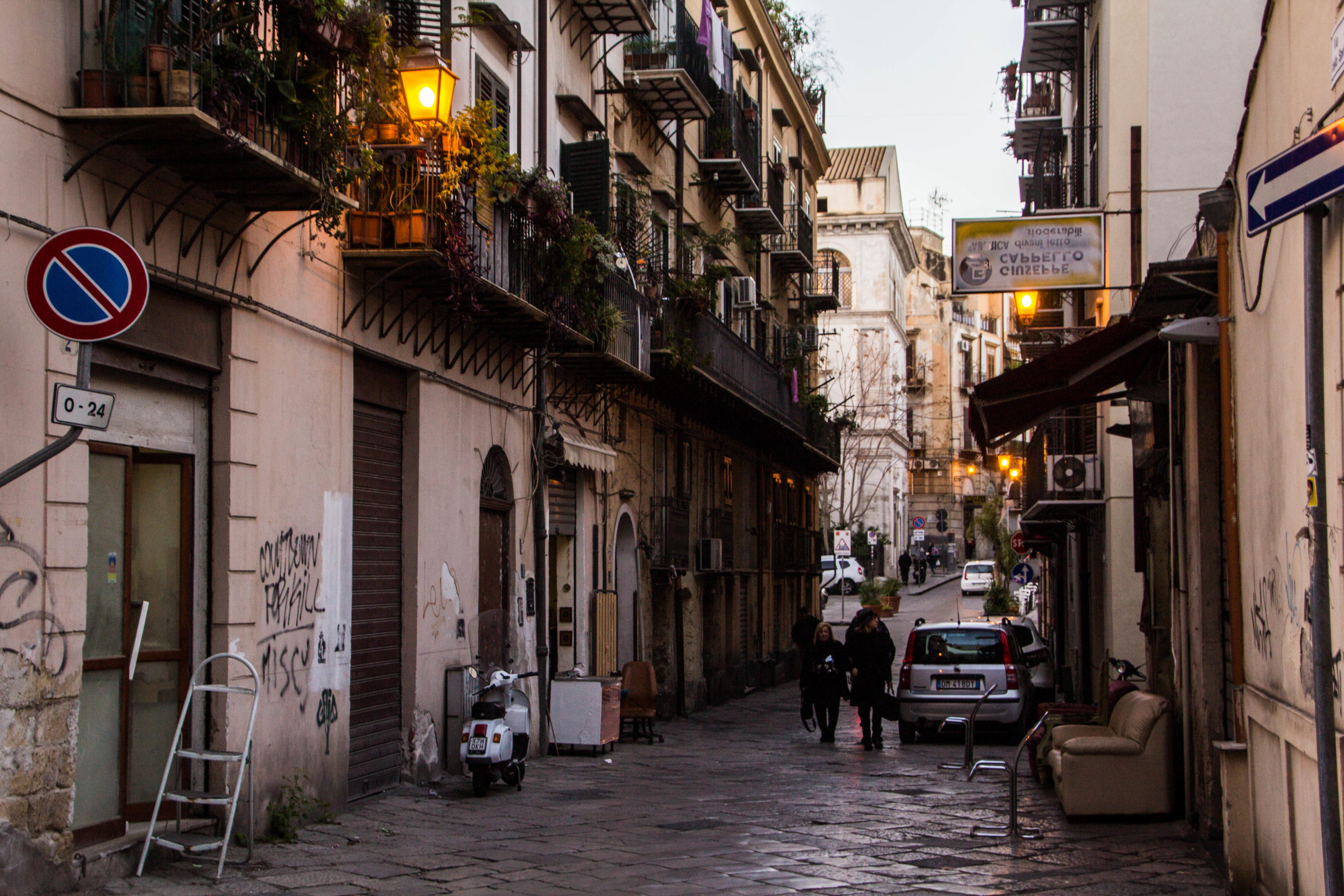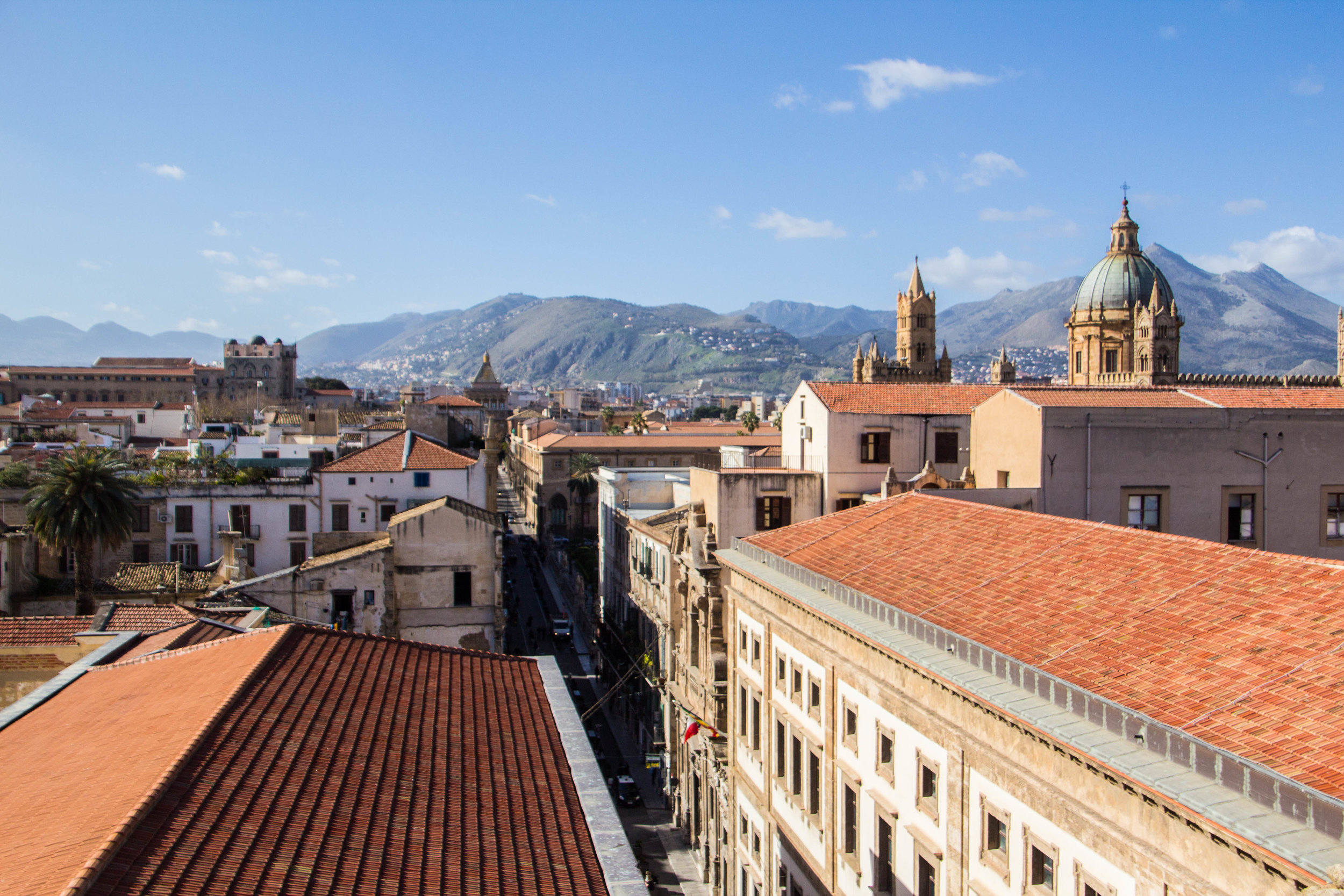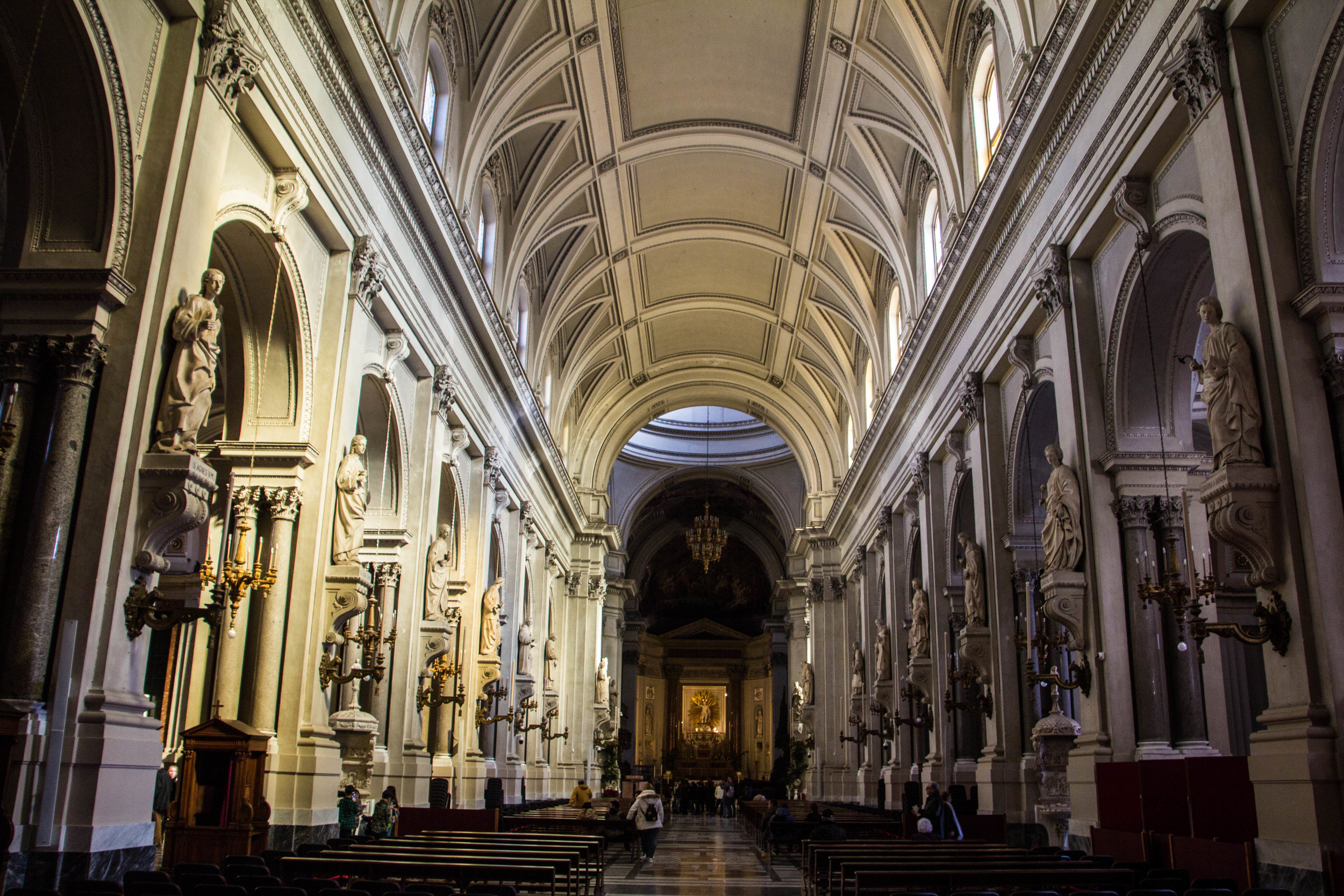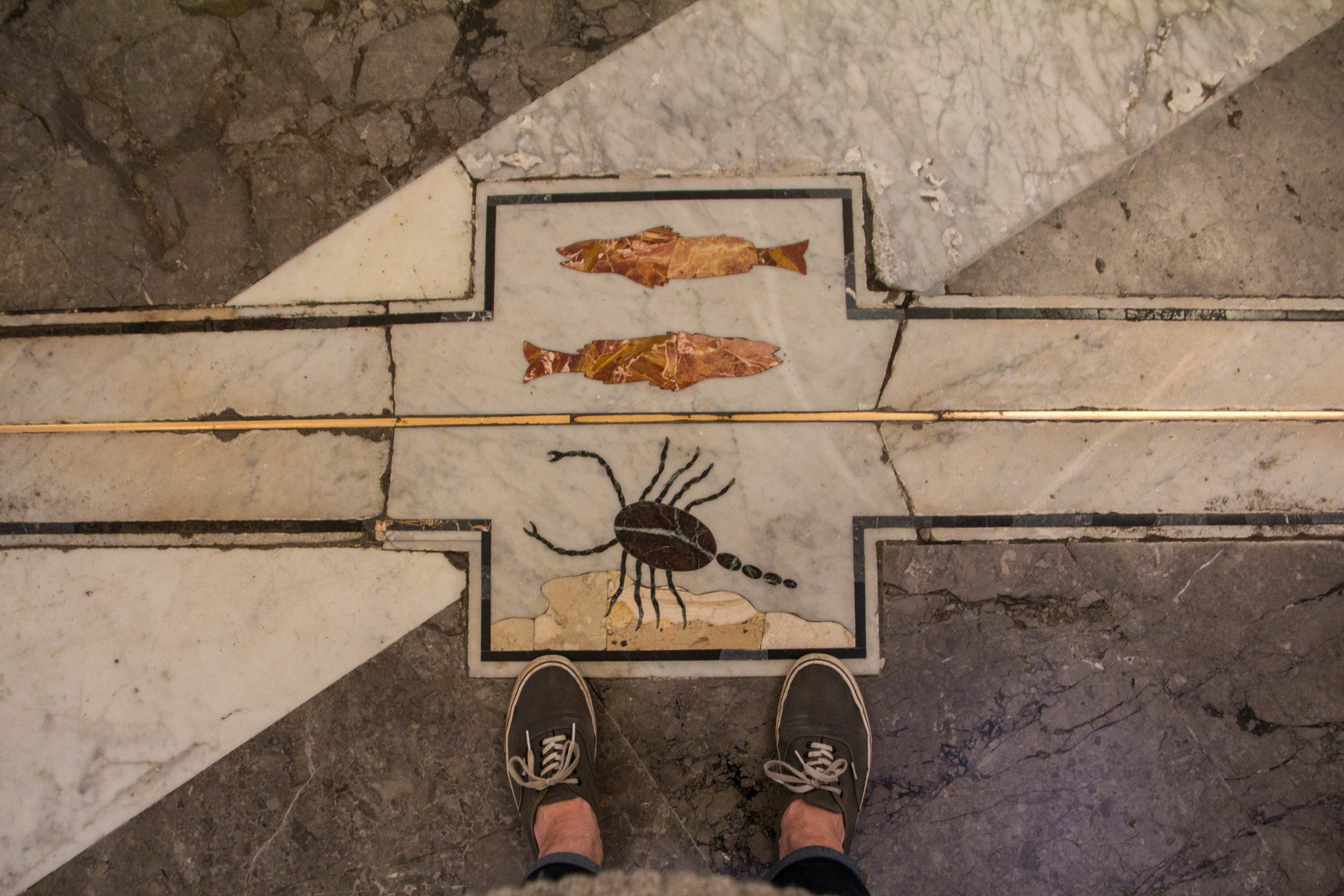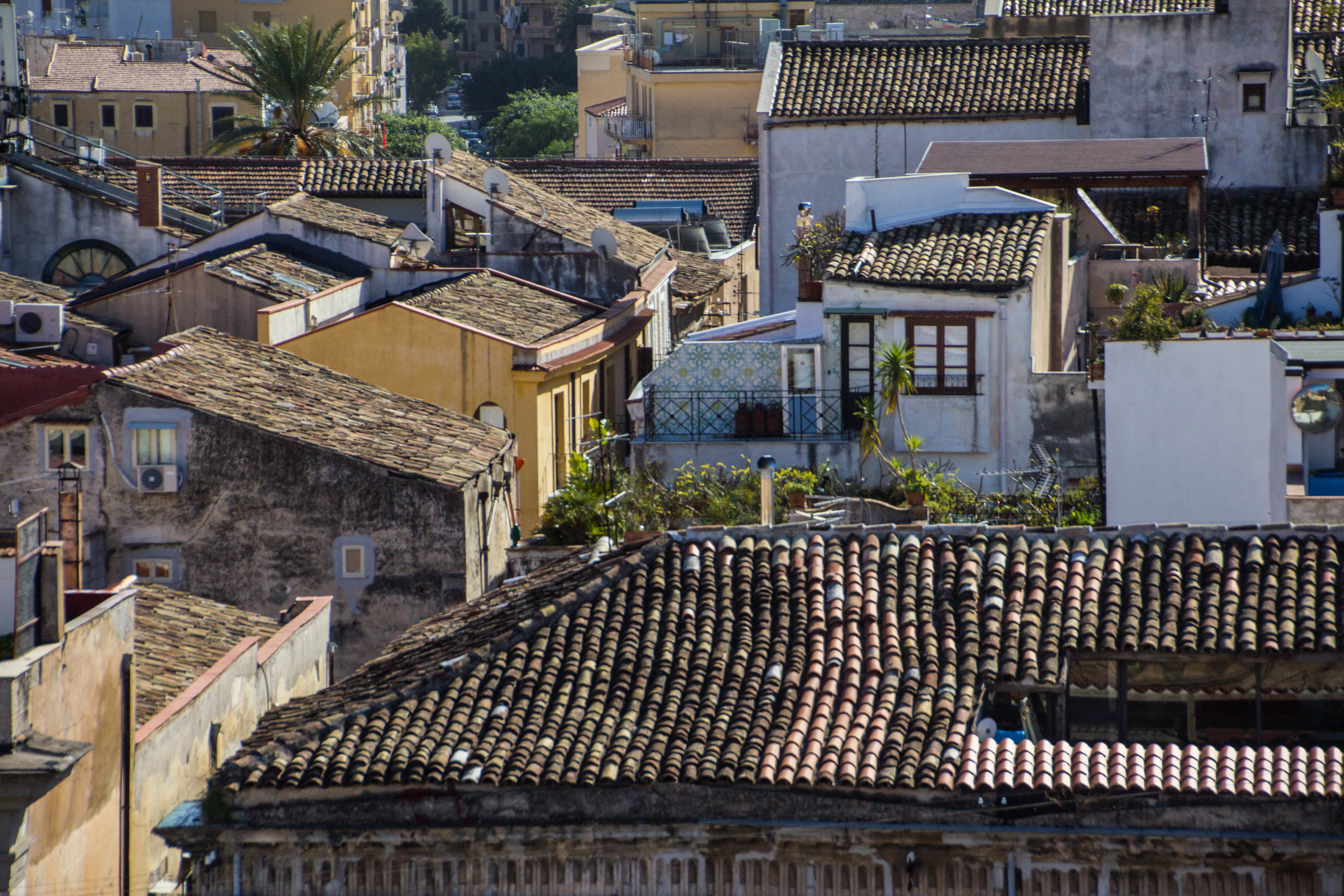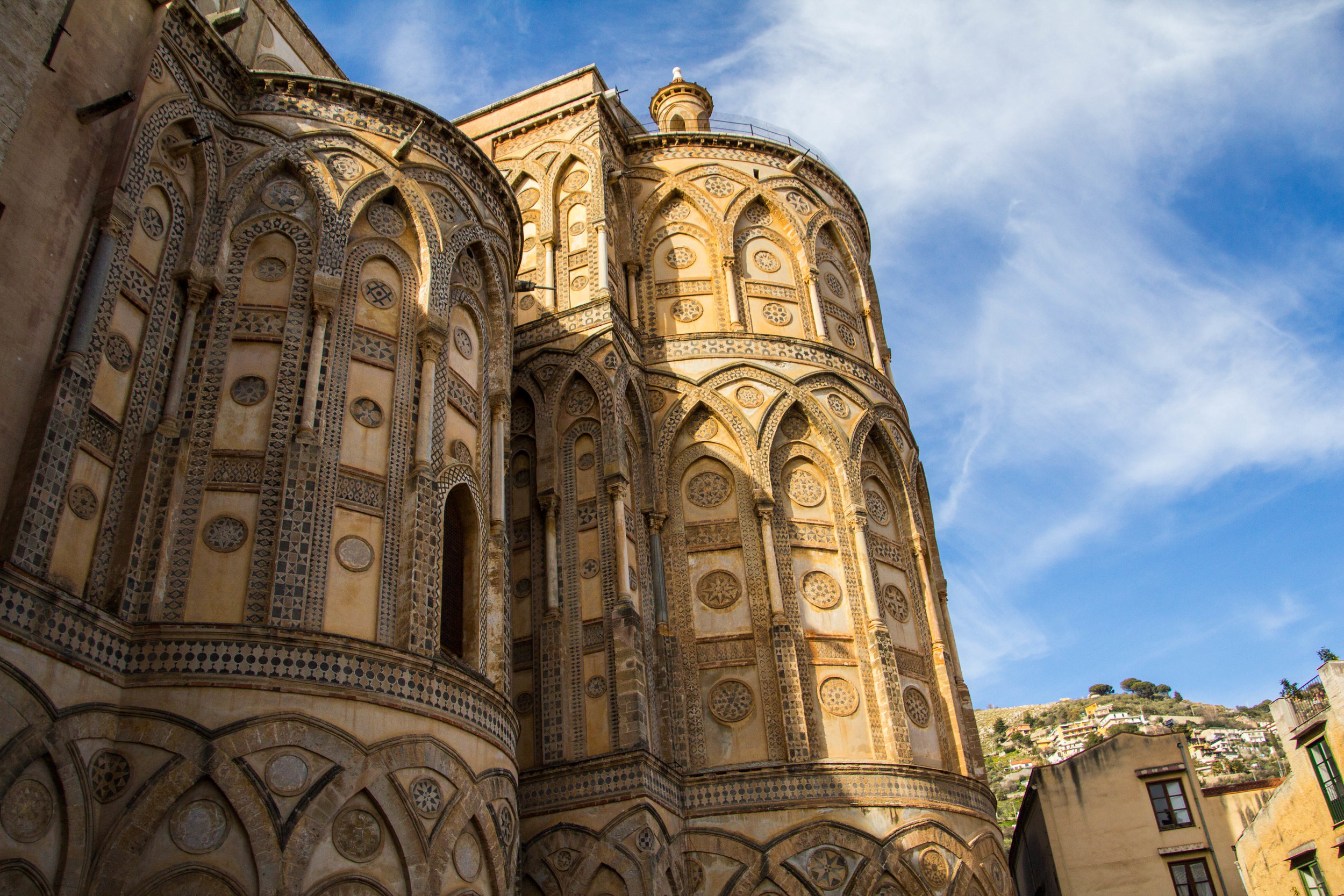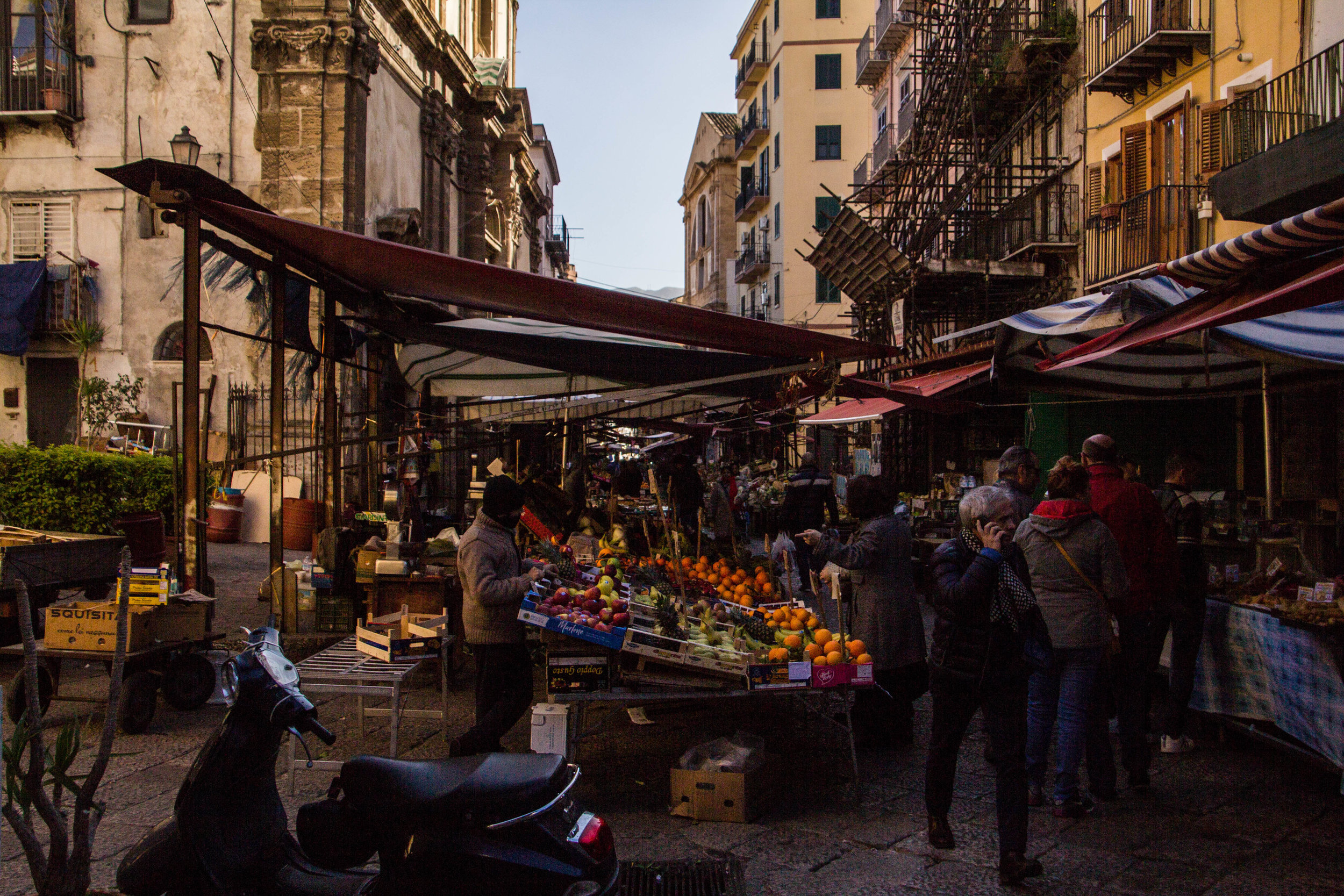Our last stop in Sicily is going to be Palermo! And as some of you may remember, way back in the first article in this series on Sicily I talked about how I am Sicilian by blood, and how my heritage is a major point of interest and pride for me. You may also recall that I was traveling through Sicily with my dearest mother, who is 100% Italian. (I'm only half.)
WELL GUESS WHAT!
For my mom and I, Palermo is where the genealogical journey began. I'm just a couple generations away from having been born here, but I was raised on a steady diet of Italian food nevertheless. I'm a big believer in the idea that cities have enduring character traits and emotional energies that transcend the people who happen to be living in them at any given time. I'm also a fan of the idea that people carry cultural sensibilities with them through generations—because being Italian has always played a bigger role in my sense of identity than it probably should have for an upper-middle class white kid born in Ohio. Over the course of this trip so far, I had already done some unpacking of the role that Sicilian culture played in my upbringing, so I was excited to complete the pilgrimage.
So without further ado, let me introduce you to Palermo...
An Introduction To Palermo
Believe it or not, Palermo is the 5th largest city in Italy. Ranked just behind Rome, Milan, Naples, and Turin, Palermo has 1.2 million people in its metro area. It's the capital of Sicily, and has been a dominating cultural forced for more than 2,000 years. So before we talk about present day, I just want to give you a quick run-down of some of the history behind this fascinating place.
Human history in this area dates back to the Mesolithic era, but it was not until 734 B.C.E. that Palermo was officially founded by the Phoenicians. Over the next few thousand years, control of Palermo would pass from the Phoenicians, to the Carthaginians, to the Romans, to the Byzantines, to the Vandals, to the Arabs, and finally to the Spanish before arriving into a period of self governance. There were a few other empires that entered the mix as well, but that about covers the biggest plot points. As a result of Palermo's long a varied past, the artifacts sprinkled throughout this city today form an all-you-can-see buffet of nearly every empire to ever expand across the Mediterranean.
As modern-day Italy began to come together, Palermo was the clear choice for the capital of Sicily. Though there were occasional bouts of civil unrest, most notably an all-out rebellion on 1866, for the most part it was flourishing. It wasn't long before the city expanded beyond it's medieval walls to develop sprawling neighborhoods and suburbs. Under Mussolini, Palermo almost got all the way through WWII untouched... but then in 1943, during the Allied Invasion of Sicily, American, Canadian, English, and French forces bombed the b'Jesus out of it, all but destroying major areas of the city.
Also, we should probably talk about the Mafia, locally known as "Cosa Nostra." Prior to WWII, Sicily was already struggling with the Mafia, and that problem did not go away with the fall of Mussolini. In fact, things actually got worse before they got better (and they still haven't gotten that much better). The Italian government has historically had to share control over Sicily with the Mafia, both administratively and economically, and Palermo has always been an epicenter for this conflict.
After WWII, these issues only intensified as Palermo's population began to swell. The 1950s to the 1980s saw a fall in Sicily's economic dependence on agriculture, which prompted massive migrations to the city. Naturally, this caused a housing shortage, which was met with scrambling construction workers building ugly apartment buildings as fast as they could, mostly on top of what had formerly been beautiful green space. Italians refer to this period of rapid and awful construction as "scempio," or "The Sack of Palermo." Today Palermo is known more for its flaws than anything else. The Mafia is still a major factor here (though not quite as strong as they once were) and those ugly buildings still surround the historic center of Palermo, forming an asteroid belt of ugly that extends to the outskirts of the city.
Or, that's what they say at least. But seeing as we're about to see Palermo for ourselves, you can I can be the judge of that!
So we're going to pick up where we left off—driving into Palermo from Gangi. It was a gorgeous but surprisingly rugged drive, and by the time we reached the coastline near Palermo, the sun was just beginning to set. I was expecting the mountains to have subsided by the time we reached the "big city," but to my surprise, they never did. We were on the outskirts of Palermo before there was any kind of break in the terrain. The sky was a gentle hue of pink as we rolled into town. To our left we could see the blue of the Mediterranean off in the distance between buildings, and surrounding Palermo on all other sides were big, blocky, green mountains. I'm not gonna lie—it was pretty freaking cool!
Rolling into Palermo, the city had a palpable energy and warmth to it. The streets were packed with people, from children to adults, presumably all out for passeggiata. Weaving in and out of traffic, there was a young boy—probably 13 years old—on a disproportionately large motorcycle. Driving in through the eastern side of the city, most of the buildings surrounding us were high-rise apartment buildings. However, as we ventured further into the city, things quickly became much more dense.
We had reserved an Airbnb in Palermo's "Kalsa" neighborhood. If you're unfamiliar with Palermo, the "Kalsa" is the name of the city's historic Arabian quarter. By the time we passed into the Kalsa, driving had gone from a convenience to a major cause of stress. Still, things were going okay until the fateful moment came when our GPS instructed us to turn down a small side street. Of course this street turned out to be crowded with locals, all taking their usual pre-dinner stroll. There were children, shop keepers, boyfriends, girlfriends, old men, old women, police officers... actually, as our car drew closer to one particular pair of officers I started to suspect that maybe we were coming a little too close to them. My mother was behind the wheel—I assumed she had things under control... but then we just kept on moving. "
"Hey you're getting pretty cl--woah, woah, WOAH!!!"—and then it happened.
We slammed a police officer's hand with the rearview mirror of the car.
I was waiting for us to get arrested or something, but the officer just looked startled. And MOM just kept on driving, not even realizing that she had just hit a police officer with her car. Now would probably be a good time to mention that, earlier this same day, she had turned into a roundabout going the wrong direction. #thuglyfe
Well I'm sure that you'll be relieved to hear that we did, eventually, find parking. Once we had made our way up to the apartment that we had rented on Airbnb, our host informed us that, in order to park in the Kalsa, we would need to go out on foot, physically purchase a separate entry ticket for each day of our stay, and then walk them back to our car. The nearest kiosk where these tickets were sold was, of course, outside of the Kalsa. And once the tickets had been purchasesd, we would need to call a phone number and enter both our ticket number and our license plate number before 8:00am the following day in order to be safe from trouble. So that was a massive hassle. Be warned!
But now that we're all settled in, let's get out and start exploring Palermo!
Exploring The Streets Of The Kalsa
Palermo's Arab Quarter
Prior to actually coming here, I had heard mostly negative reviews of Palermo. After traveling through the rest of Italy, people love to dish about how dirty Palermo is. And Bourdain's episode on Sicily painted Palermo with similarly discouraging colors. People also brought up the Mafia a lot when discussing Palermo, alluding to connections between the systemic corruption of government and the poor up-keep of the streets. A few weeks out, I was sort of expecting Palermo to be a dump, but then I had an Italian friend rave about how much she loves this city, describing it as 'decaying and decadent.' This put my expectations on par with Havana, Cuba, and that made me really excited!
Well, reality is often a bit less interesting than myth. Embarking out into the streets of Palermo, I was not immediately struck by its dirtiness or decay. It did have a certain, shall we say... "earthy" quality to it, which I had come to expect from Sicilian cities, but overall, I thought it was a beautiful place! And it was definitely less dirty than Catania. So rather than continue to dwell on this alleged "dirtiness," I'm just going to move on!
Walking around this city with my mother, I laughed when she exclaimed, "everybody here looks like my cousin!" I could see what she meant. Nearly everybody we passed on the street looked somehow familiar, like I had seen them at a family reunion at some point in my childhood. There was a slight tint of annoyance in her voice as she processed this ancestral tie. "All Italian men are babies!" she said. "They all get spoiled by their mothers! But if you're a GIRL in an Italian family..." These complaints were clearly symptoms of her own childhood baggage (having grown up in an Italian household), but I understood. Her interactions with Palermo were clearly a lot closer to home than my own, but I also felt the familial connection.
Let's use Arancini as an example. This isn't the easiest dish to make, but it is absolutely quintessential to Sicilian cooking. My mother prepared it for us quite a few times over the course of my childhood, which is no small feat; it's actually a huge hassle to make. Arancini are balls of rice, stuffed with marinara sauce and a combination of meat and vegetables, enclosed by a breaded coating, and then fried. Because they are such a pain in the ass to make, we treated Arancini like a fine-dining experience, but upon arriving in Sicily, we were surprised to find that Arancini is actually street food, similar to the way we treat hot dogs in the U.S.
Late one night in Palermo, on a quiet corner of Via Maqueda (which is a main thoroughfare of the Kalsa), we were buying a couple Arancini from a street vendor. We paid and then turned around to see 2 children, a brother and sister, with their hands outstretched, begging for money. My mother, being the charitable one, rolled her eyes and sadly handed over her arancini to the children without missing a beat. I always chuckle thinking about her reaction because it was as if she had no choice. She just turned right back around and bought another one, but in the additional time that we were standing there, we saw these kids return to a man who was presumably their father. He seemed frustrated that they hadn't managed to get any money from us, but the kids, still wiping marinara sauce from their mouths, looked full and happy. And that's why you never give money to beggar children; there is likely a shadowy adult figure, standing somewhere nearby, who will be the *actual* recipient of your money.
We actually ran into these same children again a little while later, and the brother (who was maybe 6 or 7) began the same shameless begging routine all over again. "Per favore! Carino per favore!" He clearly knew how cute he was. However, his older sister (maybe 10 or 11) recognized us from earlier and had to drag her brother away. She was clearly very embarrassed to have done this routine on the same tourists twice in an hour. Lolz. Here's a GIF of her face when she recognized us:
ANYWAY, what can I tell you about the Kalsa? To be honest, I expected it be more distinct in appearance. In truth, it's just the oldest, most dense part of the city. The Arabian influence here doesn't exactly jump out at you. It's mostly ancient history, and has been covered up by layers of Italy, Sicily, and Christianity. But that does not mean that the Kalsa is not beautiful—not by a long shot. It's a picturesque, cobblestone maze that weaves between ancient churches, Roman statues, and street markets. Many of the streets are open only to foot traffic, creating rivers of people ebbing and flowing through the city. It's a warm, social atmosphere. It's hard to feel too down when you're walking through these parts of Palermo. Here's a few choice photos from the Kalsa and beyond (mostly the Kalsa).
These photos span a series of walks that actually took me beyond the borders of the Kalsa often. However, Palermo got a lot less beautiful once I had left the Kalsa. Cobblestone was replaced with pavement. History was replaced with retail. And the gentle flow of foot traffic was replaced with the loud beeping of horns. This was the real Palermo—as it is known by the vast majority of its many residents. Out here, the streets took on a much grittier aesthetic, and it wasn't hard to see why Palermo would be regarded as dirty. This is what people are talking about when they refer to the Sack of Palermo. But, honestly, it still wasn't that dirty. These stretches were mostly just ugly. However, once you get past the tasteless 1960s & 70s architecture seen in many of the high-rise apartment buildings that towered overhead, Palermo still retained many of its good qualities. There were people out on the street, walking, talking, sitting in cafés—it still had a very social energy that I find myself craving on the vacant streets of the U.S. And best of all, I still wouldn't have had to walk more than a couple blocks to get a quick cappuccino or arancini.
Walking around Palermo, I found myself hopping from church to church. Normally I have a few other things in mind, but here in the Sicilian capital, I was on church overload. So let's start by going through 4 of my favorite churches I visited. This is not even close to being all of them, but these 4 made the biggest impression on me.
1. Chiesa di San Giuseppe dei Teatini
This first church is kind of a random one. I haven't seen it mentioned in many articles or guidebooks, but I stumbled into it by chance and was blown away by what was inside. Chiesa di san Giuseppe dei Teatini sits at the intersection of Via Vittoria Emanuelle and Via Maqueda, which is one of the most central plazas of the Kalsa. Via Vittoria Emanuelle is a contemporary name for a street that was historically called the Cassaro. The Cassaro (a.k.a. Vittoria Emanuelle) is the most famous street in all of Palermo. Although the plaza is officially called "Piazza Vigliena," this intersection is also colloquially known as "Quattro Canti." Famous for its distinct Baroque architectural style, Quattro Canti sits as the epicenter of all things historic in the Kalsa.
With such a prominent location, I thought that this must have been one of Palermo's most famous churches... right? Well in the time since I left this beautiful church, I have been surprised by how little information is out there about this church. Or, at least compared to its peers. Granted, Palermo sets the bar pretty high in the church department... but come ON! This place deserves more credit.
Okay, so why is San Giuseppe dei Teatini so amazing? I've visited many beautiful churches in my day, but this place had the most beautifully painted ceilings that I have ever seen. Dating back to the early 1600s, it's regarded as being one of the the most outstanding examples of Sicilian Baroque architecture and art in all of Palermo. It was designed by the Genoese architect Giacomo Besio, and those incredible ceilings were apparently painted by Filippo Tancredi, Guglielmo Borremans, and Giuseppe Velasquez.
To be honest, I don't feel like I did a great job of capturing the interior of this church, but I love the photo of the man sitting in the doorway of the church begging for change. You will see his little bowl sitting next to him on the stairs. It's typical to find a beggar sitting on the staircases leading into each of the many churches in Palermo. This guarantees that they can hassle tourists all day long without ever having to move. But the man sitting on the stairs of this particular church was more reserved than some of Palermo's other, more obnoxious beggars, so I look at this photo as being very peaceful.
2. Rooftop: Chiesa del Santissimo Salvatore
Chiesa del Santissimo Salvatore (or, Church of Most Holy Saviour) was built in the year 1682, and is said to stand on the site of what had formerly been a monastery of female Basilian monks. This next church is just a bit further down the Cassaro from San Giuseppe dei Teatini, but it's not the interior of this church that stands out to me. Rather, this church has one of the few rooftops in all of the Kalsa that is both public and above average in height. However, is an easy place to miss. If you're not looking out for it, you could walk right on by!
To get to the top of the church, there is a side door on the north wall of the building. Through that door there is a small booth where you will have to pay an entry fee of 2.50 EUR (3.00 USD). Once you pay the fee, you are in for a LONG climb to the top. Up narrow corridors, over rooftops, and up a precarious spiral staircase that is sure to give you sweaty palms, and you will eventually find yourself at the top. I've got a casual fear of heights like anybody else, but I would definitely say that this was worth the trip.
The view from the top of this church yielded some of my favorite pictures of Palermo. Looking out over the terra-cotta rooftops, I was reminded of how mountainous Sicily turned out to be by the rough green mountains that set the back drop. Up here I could feel the noise of the city streets below being picked up by the Mediterranean breeze and drifting away. Check out these photographs...
3. Cattedrale Santa Vergine Maria Assunta
And just a few more minutes down the Cassaro, we have arrived at the most famous church in all of Palermo. Cattedrale della Santa Vergine Maria Assunta is also (colloquially) referred to as simply, "Palermo Cathedral." This church was originally built in 1185 by archbishop Walter Ophamil. How Sicilian does that name sound to you? Like 0% Sicilian. According to tradition, he was actually English, and these Anglo roots are evident in the appearance of the church. Indeed, at first glance, the exterior of this church looks more like Westminster Abbey than any Italian church. However, there are also a hodgepodge of other visual elements at work here. Over the centuries, Palermo was ruled by quite a few different Empires, each of which left their mark on this church in the forms of additions and restorations. Most notably, the Byzantines and the Normans had their way with this ancient structure.
Our buddy Walter remains buried in a sarcophagus of the church's crypt to this very day, along with (among others) the Norman king Frederick II, his wife Constance of Aragon, and one-time 2nd in power after the King of England, Odo of Bayeux. (Those are Wikipedia links if you are interested to learn about these people—they all have some interesting resumés!) So the point is that Palermo Cathedral is essentially the modern embodiment of the last milenia of Sicilian history.
Arriving at the Palermo Cathedral, there's an expansive courtyard was awash with tourists. This was, without a doubt, the heaviest concentration of tourists that we had seen thus far in Sicily. Beneath the grandiose cathedral doors, the flow of traffic into and out of this giant structure was a little stressful, but the crowd thinned out again once we had made it inside. The main chamber of this church was, unlike the many other churches I saw around Palermo, uncharacteristically minimalist in its decorations. Instead of murals on the ceilings, everything was gray tones, with sterile spaces for Roman-style statues under every arch. The floors also promoted the gray aesthetic of the space, with awesome floor tiles showing different sea creatures every few feet. The differences between classical Anglo-Norman aesthetics and those of Sicily were very clear.
It turned out that the Palermo Cathedral also had a rooftop that visitors can get onto. However, this privalege comes with a fee. While it's free to enter the cathedral, getting on the roof costs 5.00 EUR (5.98 USD). There are also tickets that you can purchase to go into the tombs (1.50 EUR), as well as the treasury and crypt (2.00 EUR). You can also get an all-inclusive ticket for 7 EUR. I chose to the stick with just the roof, but don't worry, I'll be showing you *plenty* of dead bodies before we leave Palermo. Get your hopes up.
The stairs leading up to the roof of the Palermo Cathedral take you up a tiny, winding corridor that looks like it's straight out of Game of Thrones. The medieval-ness of this experience cannot be overstated. There was a middle-aged German woman who was climbing the stairs just ahead of me, and it was not going well for her. She was getting winded and claustrophobic, but she spoke enough English that I could give her a pep talk and we made it through together!
On the roof of the Palermo Cathedral, there are metal bannisters that allow you to walk the full length of the structure, and give you a great view on either side of the the church. The trademark terra-cotta roofing tiles typical of Sicilian buildings stretched out all around me like a model train set. And agin, the green mountains surrounding Palermo jutted up in the distance, as a sobering reminder of Sicily's rugged terrain. Here are a few of my favorite shots that I took up there...
4. Duomo di Monreale
Last on our list of churches, we need to talk about the Duomo of Monreale. This might be even more famous than the Palermo Cathedral, but it's not actually in Palermo. Monreale is actually a different city. It sits on one of the many mountain ridges surrounding Palermo, and looks back down towards the metropolis and the Mediterranean just beyond. Leaving from the Kalsa, it's maybe a 30 minute drive to get up here, depending on the traffic. Here it is on the map to give you some context...
The drive out here was a little stressful, given the chaotic nature of Palermo traffic. Once we were on the main thoroughfare leading out of the city, things got really crazy for a few miles. Traffic was moving slow, and in the rearview mirror of my car, I saw some of the most hilarious hand gestures ever. Think about your stereotype of Italians waving their hands around... and then multiply that by 10. It seems to me that Sicilians are a lot like other Italians... but more. And I feel fine about saying that because I am Sicilian. I was having a good laugh watching people deal with rush hour around us.
Anyway, eventually we broke free from all that traffic, and began the steep ascent up to Monreale. In the distance behind us, I could begin to see the buildings of Palermo stretching out below us. And beyond that, the blue of the ocean. Once we were rolling into the narrow streets of Monreale, we jumped on the first parking spot we could find, and continued on foot. I was very thankful that we had decided to rent a car in Sicily, but Monreale was small enough that we could walk pretty much everywhere. So we walked up to Piazza Vittorio Emanuele, found a café, and order a pair of cappuccinos. The Duomo of Monreale was right in front of us now, but before we go in, let me show you a few photographs from around the town, outside the church, and looking back down towards Palermo...
The interior of the Duomo of Monreale is quite a few levels above anything that we saw in Palermo. It's main chamber is just so much bigger than anything else we had seen in our trip thus far (except for, of course, the Vatican). However, the real "wow" factor of this place is the fact that nearly every inch of the walls and ceiling are sparkling with an elaborate mosaic made of gold. Yes, gold. The light was a little challenging to shoot, but I think I managed to come away with a few decent shots (shown in the gallery below).
So why is the biggest church in the area not in the capital city, but instead in this random town outside the city? Good question. The story goes that, after Palermo was taken by the Arabs (who established the Emirate of Sicily), the Bishop of Palermo was forced to move his seat outside of the capital to a tiny church called Aghia Kiriaki in the town of Monreale. Meanwhile, all of the churches back in the city were being converted to mosques.
When the Normans captured Sicily, Christians once again took control of Palermo, but Monreale held a special place in the heart of the Norman King William II. He built a hunting lodge here, and eventually moved many of his operations out to Monreale. Legend has it that, on a hunting trip, King William took a nap under a tree and the Virgin Mary appeared to him, telling him to build this church. So in the year 1174, began construction on this church at the same site where Aghia Kiriaki used to stand. As you may notice, the interior of the church is distinct in style from many of the Sicilian churches that you will see on the streets of Palermo. Indeed, the Duomo of Monreale is another shining example of Norman architecture in Sicily.
Entry into the main cathedral is free, but there is also a chapel, as well as a multi-story museum that you can visit, both of which cost money. The collective entry fee for these add-ons is 9.50 EUR (11.42 USD). Frankly, I'm a little on the fence about whether this price was worthwhile, but if you come all the way out to Monreale, you might as well. Also, before you make the trek, be sure to check on their official visiting hours, here. Below is a selection of photos from inside the cathedral, chapel, and museum...
Palermo's Open-air Street Markets
Ballarò + Capo
Okay, now let's disembark from this grand tour of all my favorite churches in Palermo. It never takes me long to get overloaded with these religious landmarks, especially in old European cities like this one, so I rarely devote that much time to these sorts of things... but I made an exception for Palermo. Anyway, I want to finish by giving you a look at some of Palermo's famous open-air street markets.
I never get tired of walking through these things. No matter where I go and how many of them I visit, they never fail to keep me on the edge of my seat. Palermo essentially has 2 main street markets, but you'll see smaller clusters of street vendors all around the city. The biggest 2 street markets are called Ballarò and Capo. I will now do my best to tell you where to find each of these markets...
Where is Ballarò?
The Ballarò market is just a stone's throw from Quattro Canti, extending from Piazza Ballarò (in the Albergheria district, near Chiesa di San Nicolò), along Via Ballarò, past Piazza Carmine, and ending just shy of Corso Tukory. It runs roughly parallel to Via Maqueda, on a path towards the main train station.
Where is Capo?
The Capo market is located just behind the opera house, Teatro Massimo. It runs from Via Parta Carini towards Piazza Beato Paoli, with Via Volturno as a notable cross street. Alternatively, you can also access this market by turning onto Via Sant'Agostino from Via Maqueda.
I confess that I did a pretty terrible job with keeping track of which market was which over the course my wandering around Palermo. I wandered in and out of each of these markets so many times that it wasn't long before my photos were hopelessly intertwined with one another, and I was completely lost. My understanding is that Capo might have the more authentic ambience. There are stretches of Ballarò where people are selling knock-off Ray-Bans and douche-y soccer shoes, but Capo is primarily a food market. Both of these markets run from about 7:00am, late into the night. Officially they are said to be closing around 8:00pm, but I have definitely walked through them a lot later in the night than that.
Here are a few of my favorite shots from walking through these 2 markets. Most of them are from Capo, but there is some Ballarò mixed in too, as well as a few shots from miscellaneous locations. Let me tell you, I would not mind zooming back to one of these markets to do my grocery shopping. This is what real food looks like, folks.
That brings us to the end of this article, but I've got a good amount more to show you from Palermo. In upcoming articles, we'll be delving a bit deeper into the world of street photography, documenting some amazing Sicilian street art, and seeing something so goddamn creepy that I had nightmares about it when I got back to the U.S. No joke.
Notable things that we are not going to cover include basically all museums in Palermo. I actually visited the GAM (Galleria d'Arte Moderna / Gallery of Modern Art) and thought it was awesome, but they were pretty strict with letting me take photos. I snuck a few on my iPhone, but in the end I didn't feel like I had enough to really showcase it the way it deserves. However, if you are interested, it's located in the Kalsa at Via Sant'Anna, 21. This is not to be confused with the Museum of Contemporary Art (also know as Museo d’Arte Contemporanea della Sicilia, the Palazzo Riso, or simply RISO). I also visited this museum, and there was very little to see. I was in and out in about 10 minutes. However, I think they were between exhibits during my visit, so don't write them off completely.
Also the Marionette Museum (a.k.a the International Puppet Museum Antonio Pasqualino) is supposed to be awesome. But to be totally honest, by the time I got to Palermo, I was just too damn tired to bother. This was the last stop on a VERY long trip. Overall I think I did pretty well with Palermo though. Stay tuned for more!



